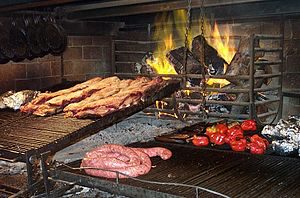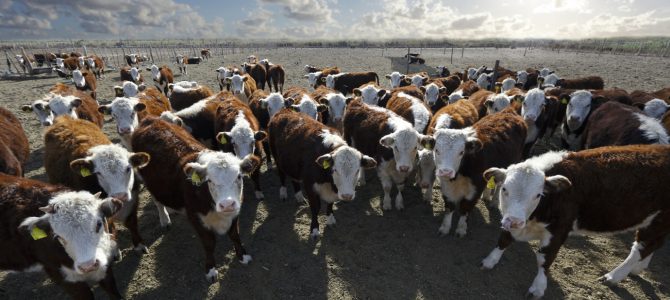For most people Argentinian cuisine is synonymous with grilled beef. Cattle were brought to Argentina with the Spanish conquistadors as far back as 1536 and the herds thrived instantly. The Pampas has a geography and climate that lends itself perfectly to raising cattle, and by the 19th century the expanded railway and the newly invented transport opportunities meant that Argentina was making its mark as a serious exporter of high quality beef. Because the Argentinian Pampas is situated in the Southern Hemisphere, this also means that the Argentinian beef enters the market at a time of year when the Northern Hemisphere is producing a lot less consumable beef. This has also contributed to Argentina’s role as a major beef provider for Europe and the USA.
Asados and gauchos
The cattle industry in Argentina has influenced the countries in major ways. Because of always having access to high quality beef, Argentinians incorporated this meat as a vital part of their cuisine. The asado is a traditional Argentinian barbeque and is usually a high spirited and social event centred around the perfectly cooked pieces of beef. The cattle industry is also the birthplace of the famous gaucho culture of the Argentinian plains. The gauchos are known not only for their cattle, but also for their exceptional horsemanship skills and their bravery as part of the Argentinian cavalry. Because of this the gauchos have become important symbols of Argentinian culture.
Trouble in paradise
The cattle industry has been a major driver in the Argentinian economy, and so the 2001 discovery of animals infected with foot-and-mouth-disease was crushing to the country as a whole. Argentinian beef was subsequently banned in over 60 countries. As of today the industry has got back on its feet, and it helps that Argentinians themselves consume approximately 55 kg of beef per person per year. Today Argentina is the world’s third largest exporter of beef, and reportedly produces 13 million heads of cattle yearly. A large threat to the country’s cattle production is the rise in soy cultivation. Production of soy is both cheaper and faster than keeping cattle, making it a more profitable alternative for many farmers.
The cattle culture of the Pampas still lives on however, and there is beef on most Argentinian tables, so for now you don’t have to worry about quelling you beef cravings during your visit to Argentina.
